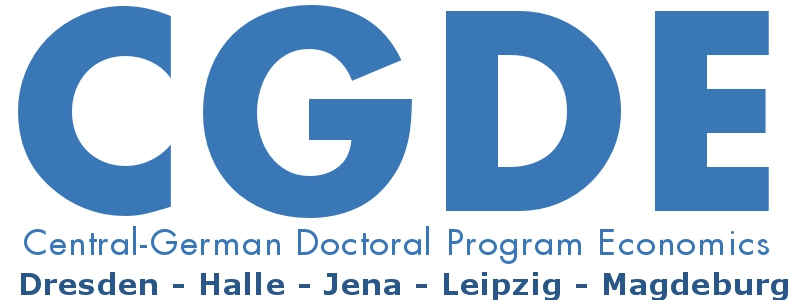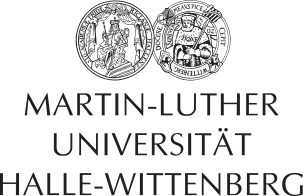Frontiers in Macroeconomics
Advanced Macroeconomic Theory – Monetary Theory and Policy in Business Cycle Models
Lecturer: Prof. Federico Ravenna (HEC Montreal)
Date: October 17 – 23, 2012
Venue: Martin-Luther-Universität Halle
Registration: Annett Hartung, amm@iwh-halle.de
Course Description
The course will cover DSGE models of the business cycle where monetary policy can have real effects.
We will build together a coherent general equilibrium framework to think about questions addressed by
monetary economists, and use this framework to develop optimal monetary policies. A primary objective of
the course is to link modelling and empirical issues in modern macroeconomics. The techniques and models
discussed in this course are at the core of the toolkit used by macroeconomists in central banks.
We will have lab sessions, where we will go together over problem sets. This should help you familiarize
with solving DSGE models, interpreting their results, understanding how to build models to answer economic
questions in the field of monetary economics, including issues of optimal monetary policy. To benefit fully
from the lab sessions, you need to make an effort and try to solve the problem sets before coming to class.
You are encouraged to solve problem sets jointly. They are also intended to suggest exercises which will
train you to apply macroeconomic tools in the same way as you will be required to do in the exams – and in
the future as researchers and professional economists.
Wed 17 October: 4 hours (10.30 – 12 pm, 1 – 3.30 pm)
Thus 18 October: 6 hours (9.30 – 12.30 pm, 2 – 5 pm)
Fri 19 October: 5 hours (9 – 12 pm, 1 – 3 pm)
Mon 22 October: Seminar (2.15 – 3.45 pm)
Tue 23 October: 5 hours (9 – 12 pm, 1 – 3 pm)
Course Outline
I. Money and output: real effects of monetary policy through nominal rigidities
1. Nominal price rigidities: models with staggered price adjustment
1.1 Flexible-price model with money in the utility function. Asset pricing conditions. Neutrality and superneutrality of money.
1.2 Solution for the price level as a function of money supply. Credibility and expectations.
1.3 One-period predetermined price model. The impact on money growth changes on real variables
1.4 Monopolistic competition and markup variation in models with predetermined prices
2. General equilibrium sticky-price models of the business cycle: the new Keynesian model
2.1 Calvo pricing
2.2 The behaviour of the economy in response to technology and monetary shocks
2.3 Introducing Capital and Investment
3. Inflation dynamics under alternative modeling assumptions: confronting the data
3.1 Steady state price distribution
3.2 Structural estimation of the new Keynesian Phillips curve with GMM
3.3 Price indexation, rule of thumbs and hybrid inflation models
4. Staggered wage setting
II. New Keynesian models of the monetary transmission: trade-offs and monetary policy
1. What drives inflation. Theoretical and empirical concepts of the output gap
1.1 Relationship between output gap, real marginal cost, and markups
2. Optimal policy in the new Keynesian model and the existence of a trade-off across policy objectives
2.1 Distortions and policy objectives
2.2 Interpretation of ’cost-push’ shocks.
2.3 The condition for efficient allocation in the economy: MPN = MRS. Deviations from efficiency in the data.
3. What drives the ’labor wedge’?
3.1 Cost-push shocks: sticky wage and price adjustment
3.2 Cost-push shocks: a structural interpretation in a model with random matching in the labor market.
3.3 Empirical evidence
4. Taylor rule estimation with GMM. Instrument rules and optimal policy
III. Welfare analysis in New Keynesian models. Time consistency, rules vs. discretion and transparency
1. Optimal monetary policy under commitment
2. Optimal monetary policy under discretion
– Markovian optimal monetary policies
– Inflation targeting as an optimal policy
3. Trade-offs with search frictions and involuntary unemployment
IV. Advanced Topics (if time allows)
1. Sticky prices vs. sticky information: empirics
2. General equilibrium monetary models of a small open economy with sticky price adjustment
3. VAR as reduced form of DSGE models. Identification.
If time allows, we will also discuss software to solve for the DSGE model equilibrium law of motion.
Material
START HERE Halle 2012 notes1
DP notes femminis
Dynare guide
Halle 2012 lab 1 answer key
Halle 2012 lab 1
Halle 2012 notes 2
Halle 2012 lab 2 AND answer key
Gali New Perspectives
wolman
Clarida Gali Gertler Structural Econometric Analysis
Ravenna Walsh Cost Channel
Erceg Henderson Levin
Slides 1























